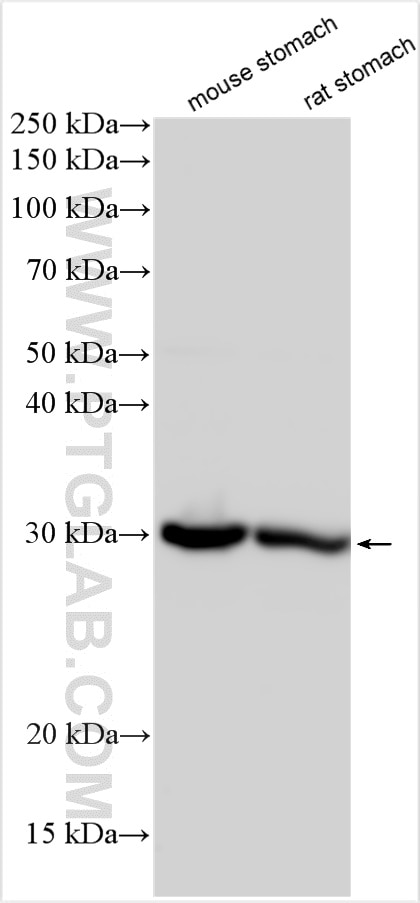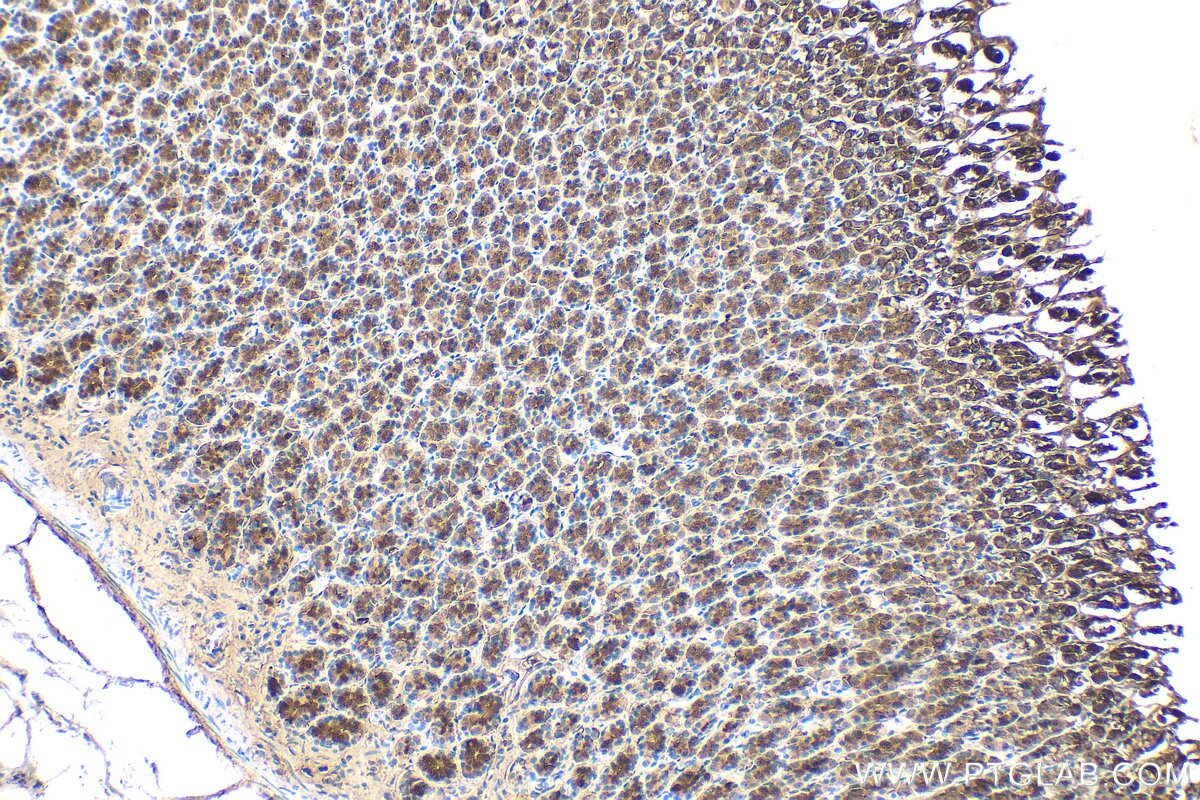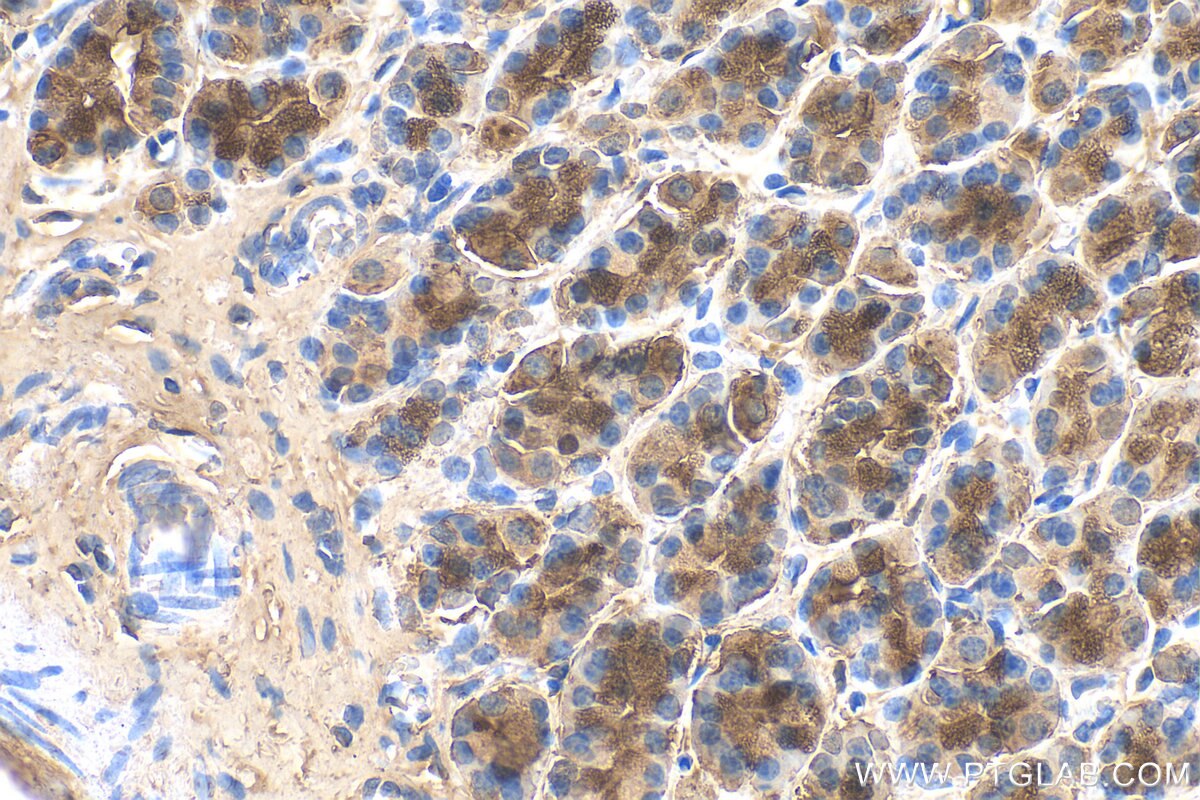Tested Applications
| Positive WB detected in | mouse stomach tissue, rat stomach tissue |
| Positive IHC detected in | rat stomach tissue Note: suggested antigen retrieval with TE buffer pH 9.0; (*) Alternatively, antigen retrieval may be performed with citrate buffer pH 6.0 |
Recommended dilution
| Application | Dilution |
|---|---|
| Western Blot (WB) | WB : 1:2000-1:12000 |
| Immunohistochemistry (IHC) | IHC : 1:50-1:500 |
| It is recommended that this reagent should be titrated in each testing system to obtain optimal results. | |
| Sample-dependent, Check data in validation data gallery. | |
Product Information
27783-1-AP targets ANXA10 in WB, IHC, ELISA applications and shows reactivity with human, mouse, rat samples.
| Tested Reactivity | human, mouse, rat |
| Host / Isotype | Rabbit / IgG |
| Class | Polyclonal |
| Type | Antibody |
| Immunogen |
CatNo: Ag27094 Product name: Recombinant human ANXA10 protein Source: e coli.-derived, PGEX-4T Tag: GST Domain: 160-324 aa of BC007320 Sequence: QGTREEGYTDPAMAAQDAMVLWEACQQKTGEHKTMLQMILCNKSYQQLRLVFQEFQNISGQDMVDAINECYDGYFQELLVAIVLCVRDKPAYFAYRLYSAIHDFGFHNKTVIRILIARSEIDLLTIRKRYKERYGKSLFHDIRNFASGHYKKALLAICAGDAEDY Predict reactive species |
| Full Name | annexin A10 |
| Calculated Molecular Weight | 37 kDa |
| Observed Molecular Weight | 30 kDa |
| GenBank Accession Number | BC007320 |
| Gene Symbol | ANXA10 |
| Gene ID (NCBI) | 11199 |
| RRID | AB_3669622 |
| Conjugate | Unconjugated |
| Form | Liquid |
| Purification Method | Antigen affinity purification |
| UNIPROT ID | Q9UJ72 |
| Storage Buffer | PBS with 0.02% sodium azide and 50% glycerol, pH 7.3. |
| Storage Conditions | Store at -20°C. Stable for one year after shipment. Aliquoting is unnecessary for -20oC storage. 20ul sizes contain 0.1% BSA. |
Background Information
ANXA10 (annexin A10) is a member of the annexin family, and its biological effects are mediated primarily through the calcium-dependent phospholipid-binding and calcium ion binding. ANXA10 is frequently found to be highly expressed in human oral cancer, and this high expression may promote G1 phase cell cycle progression by activating the ERK/MAPK signalling pathway, which in turn results in the reduced expression of member-dependent kinases of cell cycle proteinsn and proliferation. While ANXA10 plays a diverse role in different tumours, in hepatocellular carcinoma, the overexpression of ANXA10 significantly promotes apoptosis. Conversely, in papillary thyroid cancer, the knockdown of ANXA10 promotes apoptosis by inhibiting the MAPK/ERK signalling pathway through the downregulation of TSG101 (PMID: 36936694).
Protocols
| Product Specific Protocols | |
|---|---|
| IHC protocol for ANXA10 antibody 27783-1-AP | Download protocol |
| WB protocol for ANXA10 antibody 27783-1-AP | Download protocol |
| Standard Protocols | |
|---|---|
| Click here to view our Standard Protocols |








